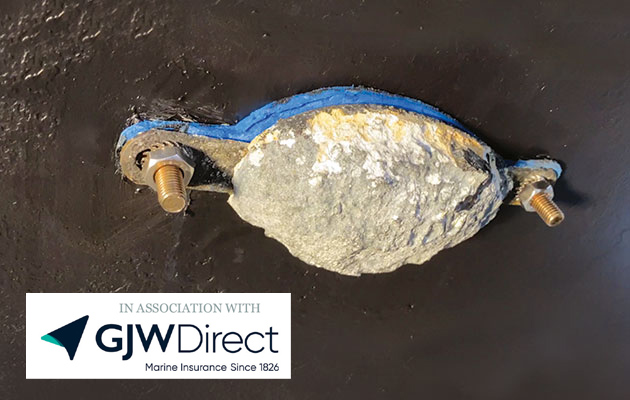Promotional feature in association with GJW Direct. Mooring a boat alongside securely will make manoeuvring easier, protect the boat in strong weather and give you peace of mind, says Rubicon 3’s Bruce Jacobs
When it comes to mooring your boat alongside, it helps to know which lines do what, what type of boat rope to use and how best to arrange them so that you can leave your boat confident that she won’t come to any harm. At the bow and stern, perpendicular to the pontoon are the two breast lines. These stop the boat moving out away from the pontoon. The two spring lines run fore and aft to stop the boat moving along the pontoon. They can be rigged from the bow and stern to a midships cleat on the pontoon, or from a midships cleat on the boat fore and aft to cleats on the pontoon.
BREAST LINES
The breast lines control how snug the bow or stern is to the pontoon, but don’t need to be overly tight, so the boat can move a little rather than snatching at its lines.

Breast lines hold the bow and stern in while springs stop the boat moving fore and aft
SPRINGS
Whichever way you rig your springs, they will do the same job. If you need a bow or stern spring for manoeuvring, however, the springs will need to be rigged from the bow or stern, not midships. The longer the lines the better. Nylon rope has plenty of stretch to absorb the snatch loadings. If the springs are too short, or you use a low-stretch rope such as braid on braid or Dyneema, there won’t be enough give.

PONTOON CLEATS
Use a figure-of-eight on the cleat when you first come alongside. Once secure, swap it for a large bowline. If someone else is already using the cleat, pass your bowline up through theirs, then over the top of the cleat, so either of you can cast off without untying the other. For added security, drop an extra loop over the cleat, or pass it through the legs of the cleat and then over the top. You can also use a round turn and two half hitches, which is easier to untie under load.



ROPE ABOARD
Always keep the rope tail on the boat. With your bowline on the pontoon, pull the slack on board and tie off with a neat OXO (once round the cleat, a figure of eight, and round again). Never put a bowline or spliced loop on the boat’s cleats; an OXO is the only reliable method for letting go under load.
How to: service your lifejacket
Checking your lifejacket is in top condition should be done at least every season, says Bruce Jacobs
How to: check and change an anode
Promotional feature in association with GJW Direct. Keeping your anodes in good order prevents serious damage on board, says Rubicon…
How to: change a marine diesel water impeller
A well maintained impeller pump should prevent a failed impeller, says Bruce Jacobs of Rubicon 3
DOUBLING UP
In strong winds or if you’re leaving your boat, it is worth doubling up the lines. Ideally use two separate ropes to separate cleats, both on the pontoon and aboard, then if a cleat or rope gives way, you’ve got another to fall back on. Doubling up is different to rigging slips, where the working end of a mooring line goes round the pontoon cleat and back aboard the boat, which you will do before untying your bowlines when it is time to leave so lines can be handled aboard.
CHAFE
Mooring alongside, lines often go around sharp edges or over harbour walls and are liable to chafe. Keep a close eye on it and where there is any more than superficial wear, it’s time to replace the rope. The cost of new rope is worth it so the boat stays securely moored alongside.

GJW Direct offers some of the most comprehensive and competitive boat insurance policies on the market. With more than 175 years in marine insurance, when you insure your yacht with us, you’re dealing with the boat insurance specialists, leaving you free to enjoy your time on the water.
With thanks to Bruce Jacobs and the experts at rubicon3adventure.com, the UK’s specialists in adventure sailing and training.








